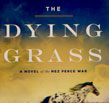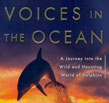 |
 |
07-03-09: Literature: Craft & Voice : A New Way to Learn Literature
Oh how we love the detritus of our college years. Not the clothes, the cars, or empty beer cans, but the books. For all the paperbacks that have come and gone, for all the hardcover bestsellers that seemed eternal when we bought them but frivolous now, there are books that won’t go away. Sometimes, they’re novels, like 'The Confessions of Zeno' by Italo Svevo. I love my much-underlined edition. But then there are also the Norton Anthologies.
Yes, I still have my Norton Anthologies. The tissue-thin paper, the tiny type, books that are one solid block of text from beginning to end... Somehow, I just can't get rid of 'em. But now they’re officially relics of another age. It's odd to contemplate how they might fit in, how the way English was taught back in the stone age might fit in, in this day of instant answers online. Fortunately, we don’t have to. McGraw Hill has been busy, and now you can get the future of Litrary textbooks.
First out of the gate is 'Literature: Craft & Voice, Volume 1: Fiction' (McGraw Hill Humanities/Social Sciences/Languages ; January 7, 2009 ; $51.30) by Nicholas Delbanco and Alan Cheuse, some 700 glossy pages not one of which looks anything remotely like an English textbook you've ever seen. It's an instant transition from the 19th to the 21st century; from tiny text to a graphics-rich environment that's a lot easier on the eye. The thrust is to transform literature from words on a page to an integral part of our multi-media lives, because as we dedicated readers know, it all starts with words and writing. Literature is the bottom layer of everything.
The look and layout of 'Literature: Craft & Voice, Volume 1: Fiction' are only one part of the equation. Just as important, if not more so, are the choices that the editors have made, the stories and excerpts that make this not just a great textbook but a fine short story / fiction anthology by any measure. You'll find Amy Hempel, as well as Neil Gaiman and Michael Crichton; T. C. Boyle as well as John Updike. The questions and assignments accompanying the text are instructive, but more importantly, thought provoking. What I began thinking as I paged through this book was that this was a perfect book for anyone who ever wanted to learn the canon of English literature for any reason. Reading and writing are the two most powerful tools you can deploy in your life; if you do them well you can pretty much succeed in any career. Here's a book that can help you do both better, includes a boatload of great fiction, lots of interviews, thought-provoking commentary and is easy on the eye. It's a reading enhancer. It will help you enjoy everything else you read more. In the end, if we read, we must read for enjoyment; everything else will follow accordingly.
|
|
07-02-09: New and Notable from Night Shade : 'Bar None' by Tim Lebbon and 'The Mall of Cthulhu' by Seamus Cooper
Welcome back, Jeremy and Jason! It's been too long, and now you're making up for lost time, big time. Night Shade Books is back, and a couple of titles jumped out of the mailbox and into my greedy hands. Here are two books that seem to me to be no-brainer must buys. Tim Lebbon, back with a post-apocalyptic road novel titled 'Bar None,' which bills itself as "A novel of chilling suspense, apocalyptic beauty and fine ales," and novel that sells itself to me by virtue of title alone; 'The Mall of Cthulhu' by Seamus Cooper.
I've been writing about Lebbon for damn ever, because his book 'Mesmer' was one of the original books that sent me down a long rabbit hole chase from which I've never essentially escaped. In the intervening years, he's written a lot of novels. I'm pretty sure that Lebbon is going to hit big one day, and here’s why. Readers might imagine that i get lots of books, and the way I get them is often via the US Mail. Our letter carrier has to make a special trip to my porch because the packages are often too big. Recently, we got to talking and he mentioned that he's a reader. I asked him what he liked, and he mentioned James Patterson and Dean Koontz, so checked through the stacks and found some Patterson-like ARCs. But I also found 'Island,' and as my letter carrier said he like "sci-fi and horror," I thought, well, here’s a but of both and gave him the Lebbon. He came back in about a week and told me that he loved it, and had looked for more in the stores, but found nothing. So here’s the deal. We've got mainstream, bestseller tastes that are EXCITED by Tim Lebbon. Forget the friggin' marketing metrics, and all the other hogwash the sales and marketing departments are feeding you publishers: Lebbon can sell and sell big!
His latest, 'Bar None' (Night Shade Books ; July 2009 ; $13.95) is an affordably pricved, eminently readable shortish (193 page) novel about, well, the end of the world, something he does quite well. Fortunately, this end o' the world isn’t your usual new-klee-er hollow-cost, if for no other reason 'cos that might screw up the fine ales. No, you;ve got monsters in the sky and on the ground, not all of 'em human. You've got a road novel by Tim Lebbon, with monsters. A quick, depressing, entertaining and funny novel, giving you a means of comparing "end times" in fiction the current end times we're enjoying here in reality.
Then Night Shade ups the ante with 'The Mall of Cthulhu' (Night Shade Books ; July 2009 ; $13.95), a peculiar and very entertaining mix of Lovecraftian send up and hard-boiled horror procedural. There just can't be enough books like this, you know, those that take Lovecraft seriously enough so that the light of humor at the end of the tunnel can shine on our faces shortly before we discover it’s a train. This has the same sort of serious / funny ratio that made 'Resumé, With Monsters' such a delight. You need the serious stuff, because none of Lovecraft's fans want to see him simply made fun of. That's too easy, in a sense. On other hand, the material does offer an undeniably rich potential for humor. You just have to handle it right. Cooper knows how to make the grade.
He starts with two delightful characters; Ted, we'll call him Ted the vampire slayer because that's what he's doing when we first meet him, and Laura Harker, the Scully figure, I figure. Ted's a total loser who works at a coffee store but he still gets to tell the angry customer, "DON'T .... FUCK .... WITH ... ME!" Laura's a winner only by comparison. She's gets to do the FBI's copious paperwork. But of course, there's this cult and they just want to bring about the end of the world, probably because they read 'Bar None' and though that deal sounded cool. That said, Ted and Laura have to stop them, make coffee and fill out forms. Cooper hits the right tone here, and keeps it for the entire novel. This book is a serious hoot, worth your time and dime.
Both novels are published in super-nice trade paperback format — Night Shade really knows how to treat its readers. They're both pretty short, so you can gulp them in a day or two and keep them in mind for as long as you like. If the world's going to end, or indeed, if it already has ended and we've just not got around to noticing yet, these two guidebooks to the days before and after seem perfectly pitched, balanced between a new end and a new beginning.
|
|
07-01-09: A Review of 'The Angel's Game' by Carlos Ruiz Zafón : Write to Win
As readers, we're often told that we live in a "fantasy world," the thought being that those who read cannot easily distinguish between the reality of the books they read and the reality of the world around them. What then, do we make of writers? Do they as well live in the fantasy worlds they create?
One of the most dangerous subjects for any writer is writers. Books by writers about writers and writing tend to be boring, self-indulgent, and annoyingly self-referential. The bloat seems to set in before word one. The self-importance hits with the second word, and from there on out it's all downhill.
There are of course exceptions. Dan Simmons wrote brilliantly about writing and writers in 'Drood.' And uh, well, uh ... not so easy for me, alas to pull up another beyond, of course, the subject of today's review. Carlos Ruiz Zafón, in 'The Shadow of the Wind,' wrote with remarkable verve about reading and writing. A writer was not the central character in that novel however. Daniel Sempere was a reader, and a bookseller-to-be. In 'The Angel's Game,' Zafón's main character is a writer, David Martín, and his story, his stories, are every bit as thrilling as those in Zafón's first novel.
I do want to take a bit of time here to talk about the packaging and design of 'The Angel's Game', which I think is outstanding. The actual cover of the book is a wonderful photo-like vision of Victorian bookshelves, with the title of the novel on a card that ties to the book itself. The dust jacket is about an inch shorter than the book, and when you put your Demco Polyfit or BroDart cover on, there's a real feel of both art and heft. Book geeks will love it, and deservedly so. You can find my in-depth review of this wonderful novel here.
|
|
06-30-09: David Rabe Literary Double : 'The Black Monk' and 'melborP goD ehT'
Talk about turning our expectations upside-down — just take a gander at the newest trade paperback by David Rabe. When I hear that a respected playwright is having two of his plays published anew, I expect, you know, dignity, simplicity and a format to match. What I don't expect is for the ghost of the long-lost Ace Double to make an appearance in the land of litrachur.
Yet, that's what you get with 'The Black Monk and The Dog Problem' (Simon & Schuster ; July 7, 2009 ; $15). It's the only literary title I've ever seen in Ace Double format, and it really works. Sure, it's unexpected, but these are after all, stage plays published in book format. You get that far, you're already out in left field.
Rabe is a respected playwright and screenwriter who in these two plays, offers readers the chance to experience drama and dialogue in a pure state. It's an unusual and rather heady reading experience. You tear through the pages like nobody's business, pulling away huge chunks of muscular dialogue to reveal an intense vision of raw humanity. With work as strong as these plays, it's an pleasure more unusual than the two-fer format choice.
'The Black Monk' is Rabe's adaptation of a novella by Anton Chekhov. It's a peculiar idea, at first, but in retrospect really quite canny. Chekhov's work is already pretty hard-boiled, in the sense of his sharp vision of humanity, his ability to see into our black hearts and peel away the layers with a studied ease. But to take Chekhov's prose and turn it into 130 pages of dialogue so sharp you'll pray for paper cuts is really quite an accomplishment, one that Rabe handles with apparent ease. Genius, love and insanity are a heady mix, and more so when informed by the collaboration, as it were, of two superb writers.
'The Dog Problem' is pure Rabe, blackly humorous and emotionally intense. Not surprisingly, it's something of a shaggy dog story. First you have the Ray and Teresa who meet and hit it off immediately. Man meets woman, takes her home and woman meets man's dog ... in an embarrassing bit of humiliation. The woman, in turn ... Well you may or may not be able to see where this story is going, but you can read the dialogue as the characters riff their way through a bleakly humorous arc that has at least as much down as it has up. Unfortunately, down tends to land on broken glass, and up just means you’re going to fall from a greater height. Laugh and hope that nothing like this remotely happens to you.
'The Black Monk and The Dog Problem' is a great way to grab your dialogue and twist your mind, exactly 180 degrees. Simon & Schuster have done a great job on the design side, turning yesteryear's cheeze-whiz format into a pithy literary feast, all meat, no cheese. Hold the description, extra-dialogue, please. We're in a hurry.
|
|
06-29-09: "C.C." Finlay Is No 'Traitor to the Crown' : A Supernatural Revolution
There's a reason, I'm guessing why Del Rey decides to hide its assets. First it's the "T. A." Pratt Marla Mason novels. I mean why advertise that the guy writing your sorta-paranormal romances is an award-winning short story writer named Tim Pratt? Makes perfect sense. So when you look at your bookstore shelves and see the books by "C. C." Finlay, you should know better. That's Charles Coleman Finlay, a nominee for just about every speculative fiction genre award — and the man behind the "Traitor to the Crown" series. They look disposable, but it turns out they’re essential.
Charles Coleman Finlay debuted in 2001 in F&SF with "Footnotes," a very clever story told in footnotes. That story ended up in his hardcover debut, 'Wild Things' from the respected Subterranean Press. He followed this up with 'The Prodigal Troll' for another highly respected publisher, Pyr books, headed by Lou Anders. He has deep name recognition within the genre. Apparently, however, that's not a plus when you're being sold in mass-market paperback.
So take it from me, you'll want to keep an eye out for and pick up 'The Patriot Witch' (Del Rey / Random House ; April 28, 2009 ; $7.99), 'A Spell for the Revolution' (Del Rey / Random House ; May 19, 2009 ; $7.99) and 'The Demon Redcoat' (Del Rey / Random House ; June 23, 2009 ; $7.99). Yes, they look like every other paranormal romance / mystery / historical novel out there. And any name recognition you might have vis a vis his work for Sub and Pyr is pretty much erased between the generic design of the books and the abbreviation of the author's name. But search them out and you'll find a fine little series that will keep your historically-inclined tows tapping.
The premise is nice and simple. Proctor Brown is a minuteman who happens to have an unusual inheritance — he's a witch. His mother has been reluctant to instruct him, but duty calls when he realizes that the Brits are using witchcraft to fight the nascent American Revolution. Across the three novels, his skills grow, the threats get larger and more menacing, and throughout, Finlay offers up a gritty entertaining take on the birth of America. By involving magical undercurrents in the events we already know, he manages to create a keen sense of suspense in battles where the outcomes are easily found in Wikipedia.
Finlay is a wonderful writer on all levels. As a historical novelist, he gets the details right and imbues the action with a gritty sense of reality. He tosses in lots of fun details, reworked by his magical sensibility. Finlay is also an extremely experienced genre writer who knows how to make his magic seem as real as his muskets. As Proctor discovers the supernatural world, so does the reader. Finlay creates an authentic-seeming blend of primitive science and powerful superstitions that allow him to re-invent history yet let it remain as written.
Few things are as satisfying to this reader as mass-market paperbacks that look like cheese but turn out to be classy and entertaining. Finlay's "Traitor to the Crown" series is a kicky little discovery that is well worth your time. It's the sort of thing you can recommend to friends with confidence. It won't break the bank, but will keep the pages turning as well as offering a unique perspective on the birth of America. What more can you ask for heading into the Fourth of July than three paperback novels chock full of history, mystery and magic?
|
|
 |
|
|
|




